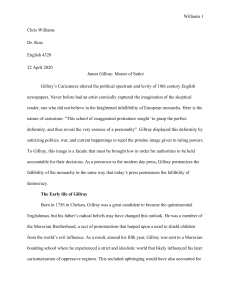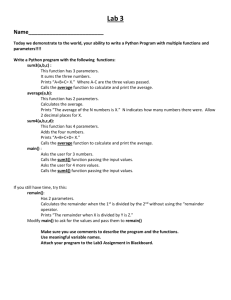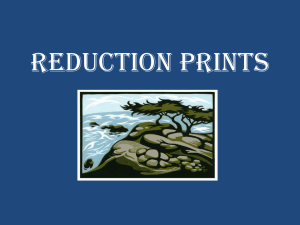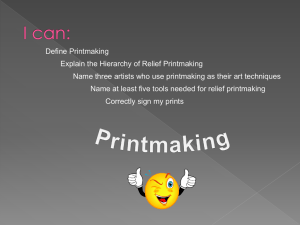On James Gillray (1756–1815) "The King of Brobdingnag, and
advertisement
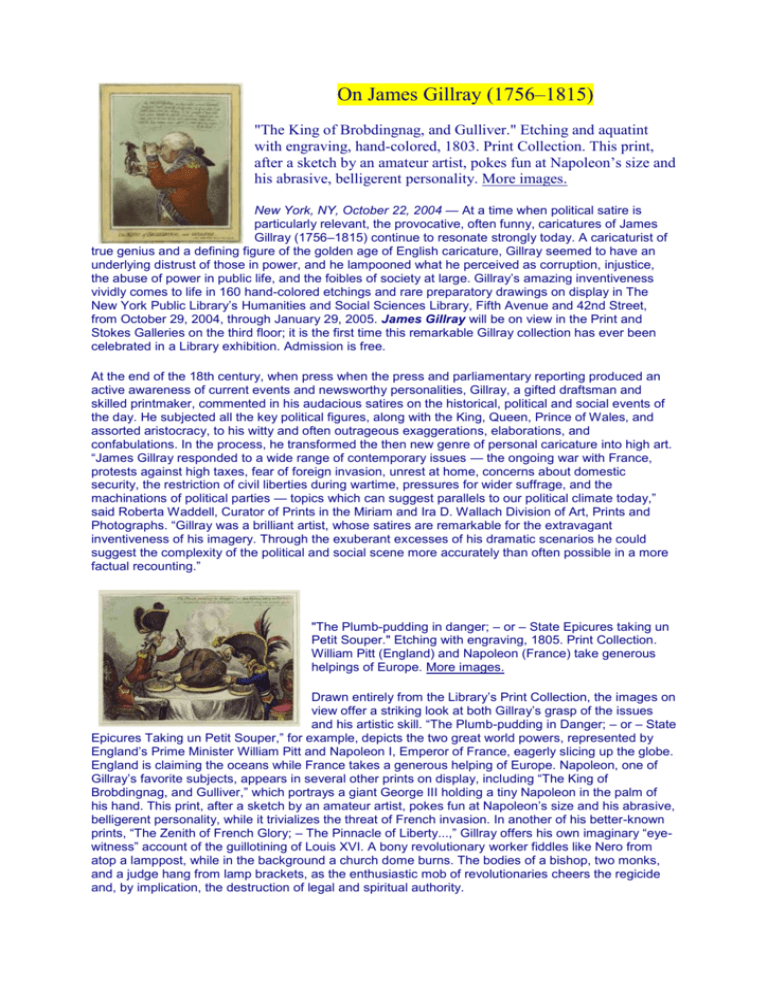
On James Gillray (1756–1815) "The King of Brobdingnag, and Gulliver." Etching and aquatint with engraving, hand-colored, 1803. Print Collection. This print, after a sketch by an amateur artist, pokes fun at Napoleon’s size and his abrasive, belligerent personality. More images. New York, NY, October 22, 2004 — At a time when political satire is particularly relevant, the provocative, often funny, caricatures of James Gillray (1756–1815) continue to resonate strongly today. A caricaturist of true genius and a defining figure of the golden age of English caricature, Gillray seemed to have an underlying distrust of those in power, and he lampooned what he perceived as corruption, injustice, the abuse of power in public life, and the foibles of society at large. Gillray’s amazing inventiveness vividly comes to life in 160 hand-colored etchings and rare preparatory drawings on display in The New York Public Library’s Humanities and Social Sciences Library, Fifth Avenue and 42nd Street, from October 29, 2004, through January 29, 2005. James Gillray will be on view in the Print and Stokes Galleries on the third floor; it is the first time this remarkable Gillray collection has ever been celebrated in a Library exhibition. Admission is free. At the end of the 18th century, when press when the press and parliamentary reporting produced an active awareness of current events and newsworthy personalities, Gillray, a gifted draftsman and skilled printmaker, commented in his audacious satires on the historical, political and social events of the day. He subjected all the key political figures, along with the King, Queen, Prince of Wales, and assorted aristocracy, to his witty and often outrageous exaggerations, elaborations, and confabulations. In the process, he transformed the then new genre of personal caricature into high art. “James Gillray responded to a wide range of contemporary issues — the ongoing war with France, protests against high taxes, fear of foreign invasion, unrest at home, concerns about domestic security, the restriction of civil liberties during wartime, pressures for wider suffrage, and the machinations of political parties — topics which can suggest parallels to our political climate today,” said Roberta Waddell, Curator of Prints in the Miriam and Ira D. Wallach Division of Art, Prints and Photographs. “Gillray was a brilliant artist, whose satires are remarkable for the extravagant inventiveness of his imagery. Through the exuberant excesses of his dramatic scenarios he could suggest the complexity of the political and social scene more accurately than often possible in a more factual recounting.” "The Plumb-pudding in danger; – or – State Epicures taking un Petit Souper." Etching with engraving, 1805. Print Collection. William Pitt (England) and Napoleon (France) take generous helpings of Europe. More images. Drawn entirely from the Library’s Print Collection, the images on view offer a striking look at both Gillray’s grasp of the issues and his artistic skill. “The Plumb-pudding in Danger; – or – State Epicures Taking un Petit Souper,” for example, depicts the two great world powers, represented by England’s Prime Minister William Pitt and Napoleon I, Emperor of France, eagerly slicing up the globe. England is claiming the oceans while France takes a generous helping of Europe. Napoleon, one of Gillray’s favorite subjects, appears in several other prints on display, including “The King of Brobdingnag, and Gulliver,” which portrays a giant George III holding a tiny Napoleon in the palm of his hand. This print, after a sketch by an amateur artist, pokes fun at Napoleon’s size and his abrasive, belligerent personality, while it trivializes the threat of French invasion. In another of his better-known prints, “The Zenith of French Glory; – The Pinnacle of Liberty...,” Gillray offers his own imaginary “eyewitness” account of the guillotining of Louis XVI. A bony revolutionary worker fiddles like Nero from atop a lamppost, while in the background a church dome burns. The bodies of a bishop, two monks, and a judge hang from lamp brackets, as the enthusiastic mob of revolutionaries cheers the regicide and, by implication, the destruction of legal and spiritual authority. Gillray also offered astute social commentary in his prints, as in the pair “Harmony Before Matrimony” and “Matrimonial Harmonics,” in which he contrasts courtship with marriage. While all is harmonious in the first print, the second shows the wife, post-marriage, singing of “Torture – Fury – Rage – Despair – I cannot can not bear,” while the baby cries, the cat hisses at the barking dog, and the fire in the fireplace can’t reverse the domestic chill registering on the thermometer. The exhibition also features 15 preparatory drawings and 3 oil sketches, as well as a letter written by Gillray to a patron. "Midas, Transmuting all into Gold [“Gold” crossed out] Paper." Etching, hand-colored, 1797. Print Collection. A shortage of gold and a run on the Bank of England, triggered by the attempted French invasion of Ireland, and mounting war costs, led William Pitt (pictured with doney's ears) to suspend cash payments and substitute paper money. More images. James Gillray James Gillray was born into a Moravian household in the village of Chelsea in 1756. His formal education seems to have been limited to a few years at a Moravian school, but his erudition and lively intellect suggest that he was well-read. As an apprentice to an engraver of banknotes, certificates, and maps, he probably learned the basics of printmaking. In 1778, he enrolled in the newly established Royal Academy, where he studied engraving, perfected his draftsmanship, and refined his mastery of the human figure. There was a wide audience for caricature in Britain and on the Continent, as Gillray suggests in one etching on view showing crowds gathered around the shop window of his publisher, Mrs. Humphrey, on St. James’s Street, where Gillray lived and worked from 1797 until his death in 1815. Gillray’s handsome hand-colored etchings, however, were priced for and primarily collected by an upper-class clientele (including the Prince of Wales). Gossip-hungry Londoners purchased satires or rented albums of caricatures, usually viewing his prints in the privacy of the library, where the exuberant and often outrageous images could be discreetly enjoyed. The Tilden Bequest In the 19th century, one avid collector of Gillray’s work was Samuel J. Tilden, a lawyer, New York governor, and unsuccessful (though popularly elected) candidate for the U.S. presidency, who assembled a remarkable collection of Gillray prints and preparatory drawings. These materials — some 831 prints (nearly all of Gillray’s work), along with 156 original drawings and several letters — came to the Print Collection as part of a bequest from the Tilden Trust, one of the cornerstones (along with the Astor and Lenox libraries) of The New York Public Library. James Gillray is on view October 29, 2004, through January 29, 2005, at The New York Public Library’s Humanities and Social Sciences Library in the Print and Stokes Galleries on the third floor. Exhibition hours are Tuesday and Wednesday from 11 a.m. to 7:30 p.m.; Thursday through Saturday, 10 a.m. to 6 p.m.; closed Sundays, Mondays, and national holidays (the Library is closed December 24 through 26; January 1 and 2, and January 17, and closes at 5 p.m. on December 31). Admission is free. For more information about exhibitions at The New York Public Library, the public may call 212-869-8089 or visit the Library’s website at www.nypl.org. This exhibition has been made possible by the continuing generosity of Miriam and Ira D. Wallach. All images, this page: Print Collection, Miriam and Ira D. Wallach Division of Art, Prints and Photographs. The New York Public Library. Please see the online image sheet for available images for press use. Also, see the website for an overview of the exhibition. Contact: Tina Hoerenz, 212-221-7676 ‘Very slippy weather' by James Gillray, published by Hannah Humphrey, after John Sneyd Date: published 10 February 1808 James Gillray drew this picture of Humphrey's Shop in 1808. 'caricature shops are always besieged by the public, but it is only in Mrs Humphrey's shop, where Gillray's works are sold, that you will find people of high rank, good taste and intelligence.' Johann Christian Hüttner, London und Paris, 1798 Gillray transformed caricature. He was one of the first professional artists to incorporate caricature portraits into more complex and ambitious satirical prints. By the 1780s, the word 'caricature' had come to denote all satirical prints. Its practice was no longer a light-hearted amateur pastime, but a political, and often rancorous activity. Gillray's career coincides with the increasing intensity of political life. He made much of the rivalry between the two main political parties, the Tories led by William Pitt and the Whigs led by Charles James Fox. The Royal Family, the French Revolution, and the Napoleonic Wars were also rich sources of inspiration. Gillray's savagely comic caricatures exposed corruption and moral failings while mocking folly, greed and lechery. Mrs Humphrey gained exclusive rights to publish and sell Gillray's caricatures at her print shop on New Bond Street. His prints, particularly the hand-coloured productions, were not cheap and were aimed at the more discerning customer. Amateurs continued to contribute to the caricature business. Several collaborated with Gillray, who developed and improved their ideas, including this print, a successful collaboration with his friend Rev. John Sneyd. William Pitt in 1789 (right)
